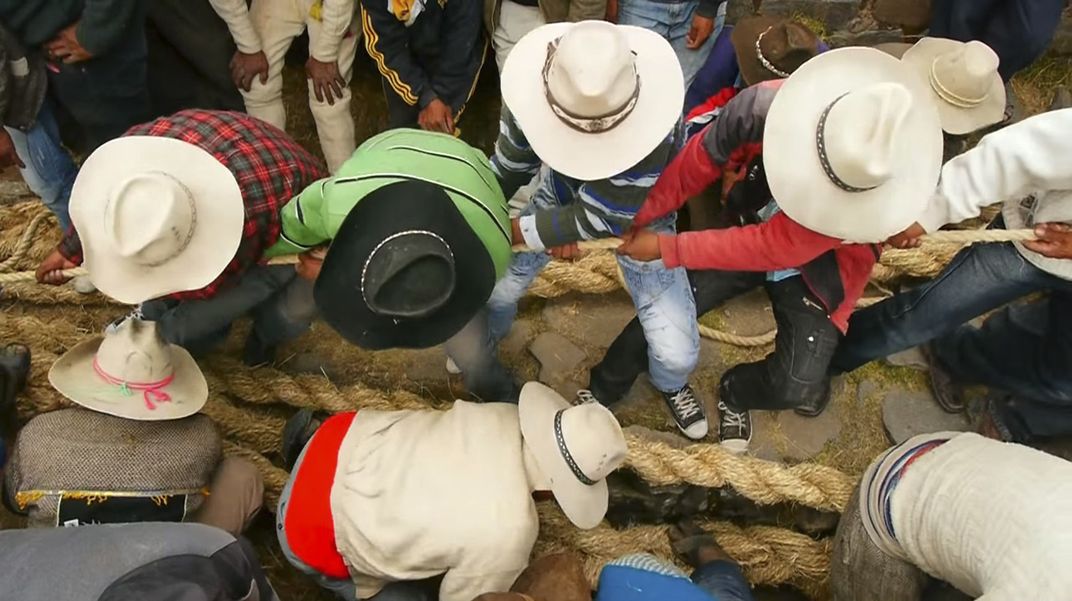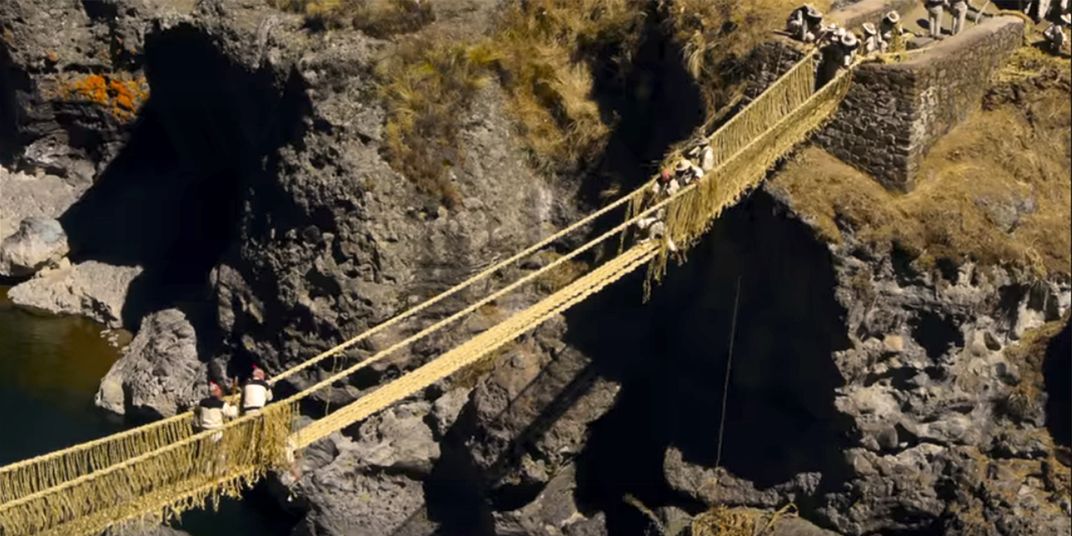NATIONAL MUSEUM OF THE AMERICAN INDIAN
Q’eswachaka, the Last Inka Suspension Bridge
Suspension bridges, which connected Andean peoples who had previously been isolated from one another, were essential to the organization and administration of the Inka Empire and played a crucial role in the social history of the region into the 20th century. No wonder neighboring communities take pride in getting together each year to rebuild the last Inka bridge.
/https://tf-cmsv2-smithsonianmag-media.s3.amazonaws.com/blogging/featured/Qeswachaka_Bridge_by_Doug_McMains.jpg)
The importance of the Q’eswachaka Bridge, which crosses the Apurimac River in Canas Province, Peru, is extensive. To understand the impact this bridge has had on the communities it connects today, it helps first to understand the history behind the bridge.
As the Great Inka Road, or Qhapaq Ñan in Quechua, was constructed, many logistical problems arose. Spanning nearly 25,000 miles, the Inka Road network runs through many different terrains, including the Andes Mountains. To solve the problem presented by steep canyons and gorges, the Inka pioneered suspension bridges that would allow soldiers, messengers, and officials to safely cross and further expand their civilization's reign. These suspension bridges, which connected peoples who had previously been isolated from one another, were essential to the organization and administration of the state and played a crucial role in the social history of the region. After the fall of the Inka Empire, the bridges survived for centuries and continued to serve as vital links in the Andean road system until the 20th century.
Chroniclers claim that the Inka used suspension bridges to extend their rule into new regions as early as the 13th century, when the Inka Mayta Capac conquered lands west of Cusco, and spanning into the 16th century. The Inka military use of the bridges can be divided into two sections: the control of lands and peoples already within the empire and the subjugation of new peoples. Even before the Spanish arrived in the empire, it was a common practice in warfare to cut bridges down or to burn them. The goals were both offensive—to isolate opposing warriors—and defensive—to stop invaders or prevent thoughts of retreat among one’s own army. Once a bridge was destroyed it took weeks to rebuild it. Bridges contributed to the downfall of the empire as well, by allowing the Spanish to cross into Inka territory, although bridges were also burned to slow the Spanish from reaching Cusco.
Inka bridges have three common design characteristics: braided cables of natural fiber form the floor and handrails, stone abutments anchor the cables on either side of the bridge, and vertical ties run between the main cables and handrails. If you look at modern bridges and compare them to the structure of the Q’eswachaka, the Inka bridge differs in that the main cables used to create the bridges not only support them, but also serve as the walkway.

The location of the Q’eswachaka Bridge—the only remaining suspension bridge of its kind—has remained the same since the reign of the Inka. The 500-year-old tradition of construction is maintained by members of four Quechua communities—Huinchiri, Chaupibanda, Choccayhua, and Ccollana Quehue—who rebuild the bridge each year. People from the communities harvest a local grass and prepare it to be woven into cables. All of the cables begin with small cords formed by twisting together the harvested grass. The small cords are then twisted together to form a larger rope, and these larger ropes are braided to create the main cables used to support the bridge.
The communities work together to pull the ropes and stretch them out. Builders leave the old bridge in place until they have hauled the new cables across the Apurimac Gorge, then cut it down and let it fall into the river. Once the main cables that will support the new bridge and serve as its floor are taut, and the cables that will serve as handrails as well, master bridge-builders work from each end of the bridge to weave its sides. Sticks woven across the floor every few feet help keep the bridge from twisting. When the master builders meet at the center of the span, all the remains is to lay matting over the bridge's floor.

The bridge-builders are so skilled, and their collaboration is so well coordinated, that it takes only three days for them to rebuild the bridge. Afterwards, the local communities come together for a celebration. The bridge connects the communities literally and figuratively. Rebuilding it is a tradition that has been carried on for hundreds of years and a joyous experience for local communities to be a part of. The Q’eswachaka Bridge acts as a link between the past and the future, and it serves as a great example of the innovation and engineering abilities of the magnificent Inka Empire.
You can see a replica of a section of the bridge, woven by the communities, in the exhibition The Great Inka Road: Engineering an Empire—on view at the museum in Washington, D.C., through June 1, 2020. Or visit the exhibition online in English or Spanish.
